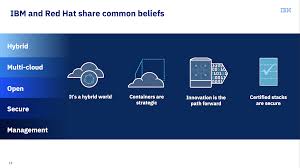Upgrade & Secure Your Future with DevOps, SRE, DevSecOps, MLOps!
We spend hours on Instagram and YouTube and waste money on coffee and fast food, but won’t spend 30 minutes a day learning skills to boost our careers.
Master in DevOps, SRE, DevSecOps & MLOps!
Learn from Guru Rajesh Kumar and double your salary in just one year.
Source:-itnews.com.au
Deploys automation and CI/CD tools, plans to expand team.
Qantas is set to expand the size of its Salesforce DevOps team, complementing work over the past year aimed at smoothing the path for new code deployments to the customer relationship management (CRM) platform.
The airline runs two Salesforce “orgs” – one for Qantas, frequent flyer, and freight; the other for Jetstar.
The number of users has grown from 430 to “over 1400” since Salesforce was first deployed five years ago, but the airline’s processes to implement code changes and improvements – and the team responsible – had largely remained static.
“Our DevOps team was operating at the same capacity as when we first implemented the Salesforce platform, but the platform had almost doubled in size,” Qantas CRM technical product owner Zain Ansari told Salesforce’s Dreamforce 19 conference last month.
“They started spending more of their time on moving code for the various project teams, and actually less time doing their job which was to develop and enhance the platform.
“Because there were so many project teams working on the same platform, we felt that we didn’t have any visibility on what the other project teams were doing and we’d only find things out at the very last minute.
“For these reasons, we basically had a self-imposed rule to only deploy one project at a time per release and that meant that some projects were delayed a few times.”
CRM platform owner Mark Pieterson suggested balance in the team’s objectives had become skewed.
“At one stage we were a balanced DevOps team when there was only one project working,” he said.
“Then we became very, very Ops [focused] and we were just keeping the platform going.
“We’re starting to come back down and so our team are able to do more of the Dev part, instead of just keeping the platform running.”
Pieterson said the DevOps team “became gatekeepers” for deployments to Salesforce; manually prioritising deployments and searching code line by line for conflicts, and testing on local machines before pushing to production.
“Every deployment felt like a mini-project. It was all hands on deck,” he said.
“Every single person that was involved in the DevOps team had to be involved in the deployments and because of business sensitivities, we couldn’t start our deployments until after hours, so our teams were often … still at work at midnight or later to get that complex code in.”
The technical and cultural part of the challenge is being resolved with AutoRABIT, which makes DevOps and continuous integration and continuous deployment (CI/CD) tools for Salesforce practices.
“The AutoRABIT platform gave us some features and a framework to start introducing some CI/CD processes or some best practices, and more automation than what we had in the past,” Ansari said.
“It gave us more auditability and transparency about what was actually going into production. Code clashes were identified much earlier in the process, like a few days in advance of the deployment day, because it was a system that would do it for us. That meant that our deployment day became a lot smoother as well.
“And we went from having eight-to-10 hour deployments almost every fortnight to only having that every now and then, and now the team is actually able to do a deployment within two or three hours.”
Ansari said AutoRABIT meant DevOps could spend “more time on development, enhancement, [and] more strategic projects … and less time handling code.”
Pieterson said the tool was also about underpinning cultural changes in the organisation around the process for enhancing Salesforce.
“I think from my perspective it’s definitely not just a technical platform, and it’s definitely not a technical project,” he said.
“We really wanted to change the mindset and the culture of our team.”
Pieterson said he wanted to improve the quality of life of the DevOps team.
“The quality of life subject for us is very important. It’s embedded in the Qantas DNA to look after our people,” he said.
“We have a fortnightly deployment cycle. [But before we had AutoRABIT, on] Thursdays people would be at work until midnight or later, having to get everything ready for the next business day, and then on top of that still be back at work the next day to work through.
“So from our perspective, it was very stressful and it was starting to stretch our people, and we could see the impact.”
Automation and CI/CD have helped, and the airline is improving its DevOps maturity against a benchmarking methodology used by AutoRABIT.
The airline has spent much of 2019 augmenting automation capabilities through the AutoRABIT platform.
“We want to do things more efficiently: continue to automate more, and do more things through CI jobs so that we [can] free our people up,” Ansari said.
“We have some great people in our team and we feel that they aren’t actually able to provide the value that they really can to our business people that use the Salesforce platform.
“We want to do more in the Salesforce ecosystem and in order to that we want to free our people up for that.”
“We all want to feel like we’re contributing to the bottom line and I think that that’s where our journey is,” Pieterson added.
Pieterson said he also now had approval to grow the size of the team, the first real change in resourcing since 2015.
“We’ve received approval to grow our team because the platform just keeps growing inside Qantas,” he said.

 Starting: 1st of Every Month
Starting: 1st of Every Month  +91 8409492687 |
+91 8409492687 |  Contact@DevOpsSchool.com
Contact@DevOpsSchool.com